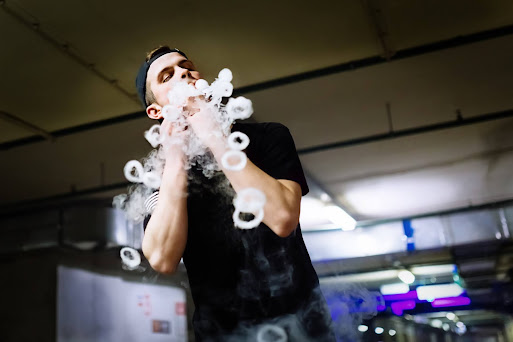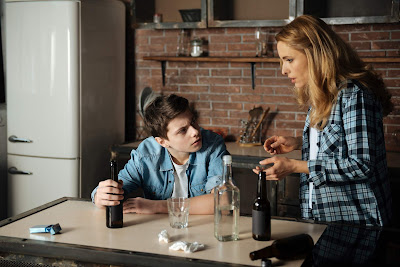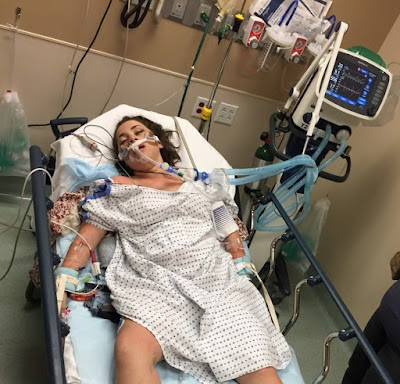Vaping: Sorting out 'fact from fiction' for those parents struggling with the issue
I've written a number of articles about vaping in the past, the first in 2014. Back then I was beginning to receive messages from schools across the country asking for advice on how to deal with the use of electronic cigarettes, or e-cigarettes as they are better known. Students were beginning to bring these devices to school and teachers, not surprisingly, knew little about them. In 2018 I wrote another piece, this time in response to concerned parents who had stumbled upon these devices in their child's bedroom. When they had confronted them about what they had found they were usually met with comments like "But it's only vaping" or "At least I'm not smoking" and had no idea how to respond. Last year I posted another article about a mother who sent me an invitation to a 15th birthday party her son had received that included a 'No vaping' message as a condition of entry. She was used to seeing 'Strictly no alcohol' on invitations but she was questioning whether vaping become such an issue that it too had to be included?
With the COVID-19 restrictions in place I had a 6-week period without working in schools. Since early May I have been extremely busy delivering online presentations to students across the country and, since late June, have been fortunate enough to go back into NSW schools to present face-to-face (following social distancing) whenever possible. The one thing that almost every school (public, Independent and Catholic) has requested I cover in my presentations is vaping. Some of the incidents that schools have had to deal with include the following:
- finding a group of Year 7 girls vaping in a toilet
- Year 9 students leaving school grounds at lunchtime to vape in a local park
- busting two Year 12 boys who were importing vaping pods from China in bulk and supplying them at great profit to students from other schools in the local area
- having parents of a Year 12 girl asking for a 'vaping room' to be established at the school because their daughter was nicotine dependent due to her 'juuling' for the past couple of years
- suspending a number of Year 10 students caught vaping on a school bus on the way to an excursion
E-cigarettes are now most commonly referred to as 'vapes' by young people. There is also a particular brand called a 'JUUL' – it looks a lot like a USB – that young women are more likely to use. As such you may hear some young people talk about 'juuling'. This is now the most popular e-cigarette brand in the US and although these devices work in exactly the same way as other vapes they are regarded by some as being just that bit cooler.
An e-cigarette is a device that simulates smoking by producing a vapour. Operated by a battery, they vaporise a liquid solution (called 'e-liquid' or 'e-juice') which may or may not contain nicotine, as well as
flavourings ranging from fruit through to chocolate, bubble-gum and Red Bull. There are also solutions that contain THC oil, THC being the main psychoactive component of cannabis. These devices are a fairly new invention, the first produced in 2003 by a Chinese pharmacist who wanted to provide an alternative and 'safer' way to inhale nicotine, i.e., it is tobacco-free and eliminates the burning process – instead of smoking, when the liquid is turned into a vapour, it is inhaled or 'vaped'. Originally they were called 'electronic nicotine delivery systems' (ENDS) and were promoted as an effective way of quitting smoking.
There has been great debate in the smoking cessation area about vaping over the past decade. Some in the tobacco prevention area believe that e-cigarettes could (and should) play a role in assisting smokers quit, while others are staunchly opposed to their use and have campaigned to ensure there is a blanket ban of these devices. This debate flared up again recently when Federal Health Minister Greg Hunt announced new laws to stop the importation of vaping products, citing health risks such as nicotine poisoning. Days later he back-flipped after pressure from the 'pro-vaping' lobby. Let me make it clear that I do not want to get involved in that debate - my only concern here is for young people, their parents and teachers. As such, I will attempt to answer some of the key questions that parents and those working with young people have in regards to this issue:
Is vaping 'safe'?
There is no evidence to support that vaping is 'safe', i.e., they are
completely risk-free. These devices have not been around for very long and so
we know little about the long-term harms associated with vaping, regardless of
what product is being used. Recent studies have found that repeated exposure to
the vapour produced could pose a substantial risk of lung disease and damage.
The inhaled vapour can inflame the lung tissue and expose users to formaldehyde
and heavy metals, which are linked to cancer and other diseases. Does this mean that vaping is resulting in many people dying or becoming extremely unwell? No, but when we start using the word 'safe' to describe any activity that is highly problematic. Of course there are risks associated with vaping, we just need to make sure that we do not overstate the harms when talking to young people. If we do and they discover that we are not telling the truth we lose what little credibility we have. If we focus on the harms that are evidence-based and most likely to have an impact on young people, we have a better chance of making an impact.
Is vaping 'safer' than smoking?
We do not know enough about e-cigarettes to say that they are a 'completely safe' alternative to cigarette smoking and there is evidence to indicate that they may pose a potential health hazard not only to the user but to others around them. Although these devices may expose users to fewer toxic chemicals than conventional cigarettes, the extent to which this reduces harm to the user is yet to be determined. It is also important to remember that the product contained in e-cigarettes are not regulated, so it is difficult to know what
exactly is being inhaled. As I say to young people when I'm asked this question – 'vaping is most probably safer than smoking, but not vaping at all is the
safest option'.
Haven't some people died from vaping?
In 2019, a number of people in the US died and more than 2000 people
developed serious lung damage linked to vaping. This condition was named EVALI
(e-cigarette or vaping product use associated injury) and was eventually found not to be a
chronic condition but acute poisoning amongst those who had vaped contaminated cannabis e-liquids. Trying to scare teens by telling them that vaping is killing thousands
of people is not going to be effective. It only takes them a quick search of
the internet to see that this is not the truth. We need to be honest – yes,
there have been deaths but they are unusual. It is also important to note that vaping
is a fairly new phenomenon – we have no idea what the long-term risks could be
for users.
Is vaping nicotine dangerous?
Whether nicotine is ingested as smoke or a vapour it is still a dangerous and highly addictive substance. Whilst vaping may expose you to fewer chemicals than smoking, vaping nicotine is still harmful to health. There have
been increasing reports of nicotine poisoning after vaping, particularly among non-smokers, with some users attending emergency departments with a range of symptoms. A few weeks ago I received a DM from a young person who wanted to tell me about a friend who had been vaping and became extremely unwell. I have removed their name but have included a copy of the message here ... part of it reads as follows: "She was vaping ... and about an hour later she was vomiting and felt extremely sick, showing all the symptoms of nicotine poisoning including tremors, sweating, nausea, vomiting etc. She was throwing up all night until about 4am and then was still feeling very sick and nauseous for about the next 3-4 days."
Since I received the message I have been using it in my talks to students to illustrate that things can go wrong with vaping, including nicotine poisoning or overdose. Are most vapers likely to die or even get very sick from nicotine poisoning? Of course not, but it is a risk and something that anyone considering vaping needs to be aware of. In addition, the addictive nature of nicotine (in whatever form it is ingested) should be made clear, although research has shown over the years that this message is not particularly effective when it comes to young people.
Is vaping illegal for those aged under 18?
There are no Australian laws that address these devices specifically. States and territories have different laws around the sale and use of e-cigarettes and the accompanying liquids but what makes it particularly confusing is the range of different liquid products that are available, e.g., just flavour, nicotine and THC. It is illegal, however, for someone under the age of 18 to buy e-cigarettes or e-cigarette accessories and for anyone to sell, market or promote e-cigarettes to people under the age of 18 right across the country.
How many teens are actually vaping?
According to the 2017 Australian Secondary School Students Alcohol and Other Drugs (ASSAD) study, 13% of 12 to 17-year-old students reported that they had ever used an e-cigarette. Around one third (34%) of 12 to 15-year-old and just over one quarter (27%) of 16 and 17-year-old e-cigarette users reported vaping at least once during the past month. That was in 2017 - I strongly believe that vaping is far more prevalent today. I've worked with a number of schools in the past couple of years and used questions from the ASSAD survey to provide a report on AOD use in their school community. Vaping rates at all the schools were nearly double of those reported in the 2017 survey. In addition, even though flavoured vapour was the most commonly reported product used when vaping, nicotine was not too far behind. Smaller number reported using THC products but they are certainly being used by some.
Australia has one of the lowest daily smoking rates in the world and that is essentially due to us successfully making smoking be seen as anti-social. Even though e-cigarettes don't involve 'smoking' per se, they still simulate the practice and there is a very real danger that this message could be eroded over time, i.e., if public vaping becomes more widespread, it will increase the visibility (and possibly perceived acceptability) of a behaviour that resembles smoking.
When it comes to vaping by teens being a 'gateway' to smoking the research evidence is mixed, with both sides of the debate 'cherry-picking' data to support their particular stand. This makes it really difficult for parents and anyone who works with young people to sort through. There have been studies that suggest vaping is actually 'replacing' rather than 'encouraging' tobacco smoking amongst young people, while others have found that those who do experiment with vaping are, in fact, more likely to become smokers. Some believe this could be due to the teens experimenting with vaping being more likely to be sensation-seekers and therefore more inclined to try smoking later anyway. We simply don't know. Regardless, adolescent vaping is not a 'risk-free' activity and should be avoided. It cannot be ignored and some parents are going to find themselves having to deal with the issue.
Although smoking rates are at an all time low, most parents are likely to continue to have discussions with their children about the topic. My advice is to add e-cigarettes to any discussion you may have around smoking - don't force the issue, let it come naturally - but raise it and let your child know exactly where you stand on young people and vaping. If they fire back something like "But it's not smoking", try and use some of the information provided here to challenge that vaping is certainly not 'safe' and there are risks, some of which we know about now but others which we may not become aware of for many years to come.





Comments
Post a Comment